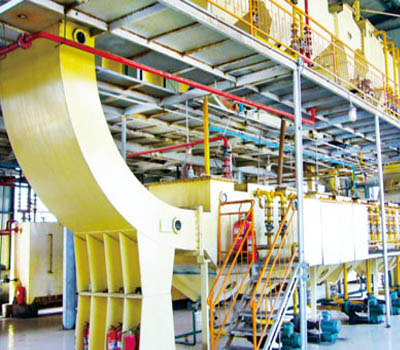Steps of solvent extraction of edible oil
Solvent extraction of edible oil is a common industrial production process, which is used to extract oil from plant seeds or other raw materials. This method has the characteristics of high efficiency and economy and is widely used in large-scale edible oil production. The following are the general steps of solvent extraction of edible oil:

1. Pretreatment of raw materials
Before extraction, raw materials need to go through a series of pretreatment processes. First, clean up impurities in raw materials, such as sediment and stones. Then, the raw materials are crushed or tabletted to increase their surface area, thus improving the contact efficiency between the solvent and the raw materials. In addition, some raw materials need to be heated or humidified to achieve the best extraction conditions.
2. Solvent selection
Solvent is a crucial part in the extraction process. N-hexane is usually used as solvent because it has good solubility and low boiling point, which is convenient for subsequent separation. The choice of solvent should consider the safety, economy and the influence on the quality of oil.
3. Extraction process
The extraction process is usually carried out in special extraction equipment. The pretreated raw materials are mixed with the solvent to dissolve the grease in the solvent. The extraction can be continuous or intermittent, depending on the production scale and equipment type. At this stage, the control of temperature and time is very important to ensure the maximum extraction efficiency and avoid the damage of oil quality.
4. Oil separation
The mixture after extraction is called mixed oil, which contains solvent and grease. The solvent can be separated from the mixed oil by evaporation or distillation. The separated solvent can be recycled, and the purified oil enters the next processing step.
5. Oil refining
The crude oil obtained by extraction usually contains some impurities, such as phospholipids, pigments and waxes, which need further refining. The refining process includes degumming, decolorization, deodorization and other steps to ensure that the quality of the final product meets the edible standards.
6. Environmental protection and safety management
In the whole extraction process, environmental protection and safety regulations should be strictly observed. The use and recovery of solvents must comply with relevant regulations to reduce environmental pollution and waste of resources. At the same time, operators should wear protective equipment to avoid contact with harmful substances.
In a word, solvent extraction of edible oil is a highly technical process, and each link needs to be accurately controlled to ensure high-quality product output. This method not only meets the market demand for edible oil, but also promotes the development of food industry.
